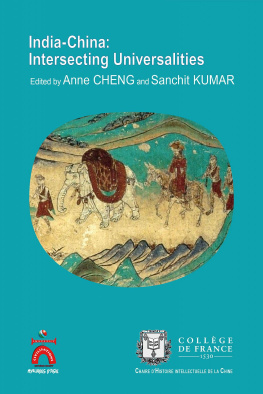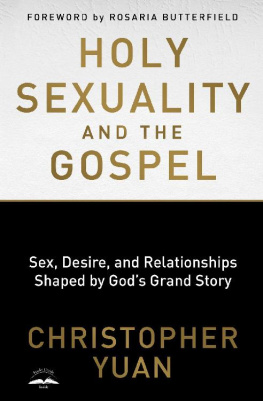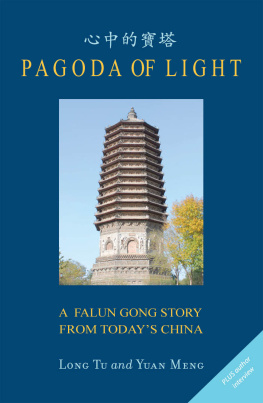Chu-yuan Cheng - The Economy of Communist China: 1949–1969
Here you can read online Chu-yuan Cheng - The Economy of Communist China: 1949–1969 full text of the book (entire story) in english for free. Download pdf and epub, get meaning, cover and reviews about this ebook. year: 2020, publisher: Kenneth G. Lieberthal and Richard H. Rogel Center for Chinese Studies, genre: Politics. Description of the work, (preface) as well as reviews are available. Best literature library LitArk.com created for fans of good reading and offers a wide selection of genres:
Romance novel
Science fiction
Adventure
Detective
Science
History
Home and family
Prose
Art
Politics
Computer
Non-fiction
Religion
Business
Children
Humor
Choose a favorite category and find really read worthwhile books. Enjoy immersion in the world of imagination, feel the emotions of the characters or learn something new for yourself, make an fascinating discovery.
- Book:The Economy of Communist China: 1949–1969
- Author:
- Publisher:Kenneth G. Lieberthal and Richard H. Rogel Center for Chinese Studies
- Genre:
- Year:2020
- Rating:4 / 5
- Favourites:Add to favourites
- Your mark:
- 80
- 1
- 2
- 3
- 4
- 5
The Economy of Communist China: 1949–1969: summary, description and annotation
We offer to read an annotation, description, summary or preface (depends on what the author of the book "The Economy of Communist China: 1949–1969" wrote himself). If you haven't found the necessary information about the book — write in the comments, we will try to find it.
The Economy of Communist China: 1949–1969 — read online for free the complete book (whole text) full work
Below is the text of the book, divided by pages. System saving the place of the last page read, allows you to conveniently read the book "The Economy of Communist China: 1949–1969" online for free, without having to search again every time where you left off. Put a bookmark, and you can go to the page where you finished reading at any time.
Font size:
Interval:
Bookmark:

THE UNIVERSITY OF MICHIGAN
CENTER FOR CHINESE STUDIES
MICHIGAN PAPERS IN CHINESE STUDIES
Ann Arbor, Michigan
The Economy of Communist China 19491969
With a Bibliography of Selected Materials on Chinese Economic Development
Chu-yuan Cheng
Department of Economics, Lawrence University formerly
Senior Research Economist
Center for Chinese Studies
The University of Michigan
Michigan Papers in Chinese Studies
No. 9
1971
Open access edition funded by the National Endowment for the Humanities/Andrew W. Mellon Foundation Humanities Open Book Program.
Copyright 1971
by
Center for Chinese Studies The University of Michigan Ann Arbor, Michigan 48104
Printed in the United States of America
ISBN 978-0-89264-009-6 (hardcover)
ISBN 978-0-472-03839-8 (paper)
ISBN 978-0-472-12820-4 (ebook)
ISBN 978-0-472-90220-0 (open access)
The text of this book is licensed under a Creative Commons Attribution-NonCommercial-NoDerivatives 4.0 International License: https://creativecommons.org/licenses/by-nc-nd/4.0/
Table of Contents
The Economy of Communist China, 1949-1969
Economic development in mainland China during the first two decades of Communist control provides a typical example for the difficult task to transform a vast underdeveloped agrarian economy into a modern industrial one. In the first half of this period, a series of massive transformations of social and economic institutions was accompanied by a drafted industrialization program; the result was an impressive speed-up in economic growth. The second decade witnessed an economic crisis (1960-62) and a political upheaval (1966-68). These disruptions marred the economic performance over the period as a whole. Consequently, the long-term growth rate appears to have been only moderate.
Any study of the economic development of the first twenty years in Communist China is greatly complicated by the paucity of reliable data and the contradictions in the Communist Chinese official reports. However, with careful examination and comparison, one can still draw some general conclusions.
The purpose of this paper is to review selected aspects of the economy. I shall first of all examine the development strategy and then analyze the quantitative trends and the structural changes. Subsequently, I shall analyze the key factors contributing to the earlier growth and the elements responsible for the later disruption. The final section will provide an assessment of the impact of the Cultural Revolution on the Chinese economy and the prospects of the current Third Five-Year Plan.
Since this is designed to be a comprehensive survey, most of the discussions will be general and brief, in order to bring out the major trends.
When the Chinese Communists assumed power in October 1949, they inherited an economy that can be called backward by any quantitative criterion. Prolonged external war and subsequent civil strife had inflicted immeasurable damage. Confronting this situation, the new government set forth two major economic goals: first, to restore the deteriorated economy as soon as possible, and second, to begin a rapid, forced-draft industrialization program to break the vicious cycle of backwardness and poverty.
In the course of industrialization, the economy experienced acute inbalances, strains, and supply bottlenecks, which forced the planners to alter their scheme. In terms of scale of priority, rate of capital formation, and investment technique, the development strategies followed between 1949 and 1969 can be roughly divided into four consecutive stages.
During the early years of the industrialization program, the Chinese development strategy almost completely duplicated the Soviet model. Since agriculture provided the lions share of total savings, the essence of this development policy was simply a continuous squeeze of the agricultural sector to support heavy industry.
In the choice of technique and scale, the Chinese planners also followed the Soviets, by investing in relatively large and capital-intensive projects. More than 85 percent of the capital investment was allocated for the 694 large industrial projects, leaving only 15 percent for the more than 10,000 small projects.
The Soviet model proved to be quite successful in the early stage of Chinas industrialization. The capacity of major industry expanded rapidly. According to official statistics, gross domestic product grew at an annual rate of 8. 9 percent and industrial production at 18 percent. The growth of agriculture, however, lagged far behind that of industry. During the same period, agriculture rose 4.5 percent a year and output of food grains by 3. 7 percent, barely surpassing the population growth rate.
As a result of the deliberately unbalanced growth strategy, the growth soon hit its ceiling. In 1956, a sharp increase in capital investment over the preceding year immediately caused inflationary pressures on the commodity market. Bottlenecks in materials and transportation and difficulties in the balance of payments forced the planners to reduce the rate of investment. In the following year, investment slipped back 7.4 percent and the growth rate was curtailed. This retrenchment caused underutilization of industrial capacity and a rapid rise in unemployment. The applicability of the Soviet model to China was questioned by economists and top planners. A new approach to economic development was planned by the Chinese leaders in late 1957, and a new drive, know as the Great Leap Forward, was introduced in 1958.
The general idea behind the new strategy was to accelerate simultaneously the growth of both the modern and the traditional sectors. Although capital goods industries were still accorded high priority, agriculture was no longer neglected. The strategy thus shifted from concentration of investment in a few lines to a more balanced pattern. Such a shift required a larger investment to push the ceiling upward. The new idea was to substitute labor for capital or to use surplus labor for capital formation.
Large-scale water conservation projects involving 100 million peasants were undertaken in late 1957 and early 1958.
In the first year of the Great Leap, both industrial and agricultural output rose sharply, partly because of the exceptionally favorable weather in 1958 and partly because of the establishment of millions of small plants. In general, Nurkses capital-creation approach seemed to be gaining ground in the Chinese case.
However, the exuberant phase was short-lived and illusory. Most of the small workshops and backyard furnaces, lacking technical equipment and skilled labor, turned out unusable products at exceedingly high costs, while the commune system destroyed peasant incentives and caused mismanagement of agricultural production. The economys limit of tolerance was soon reached and the new drive lost its momentum. Agricultural output, affected by both adverse weather and manmade mistakes, dropped precipitously in 1960, and industrial output went down subsequently. The new strategy, instead of moving the economy ahead, brought it to the brink of a total collapse.
In order to alleviate the mounting crisis, the strategy of development was drastically revised. A new policy of readjustment (of the pace of development), consolidation (of existing plants), reinforcement (of the weak links), and improvement (of quality of products) was implemented in 1961. Industrial investment was concentrated in those branches which could support the agricultural sector, notably chemical fertilizers and agricultural machinery. The new strategy thus represented a complete reversal of the unbalanced growth of the first period and also differed materially from the labor-absorption strategy of the second period.
Font size:
Interval:
Bookmark:
Similar books «The Economy of Communist China: 1949–1969»
Look at similar books to The Economy of Communist China: 1949–1969. We have selected literature similar in name and meaning in the hope of providing readers with more options to find new, interesting, not yet read works.
Discussion, reviews of the book The Economy of Communist China: 1949–1969 and just readers' own opinions. Leave your comments, write what you think about the work, its meaning or the main characters. Specify what exactly you liked and what you didn't like, and why you think so.


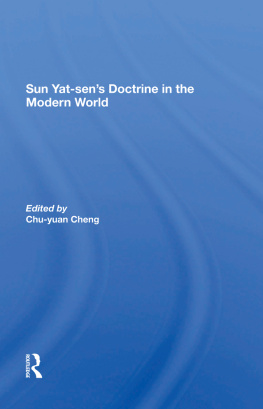

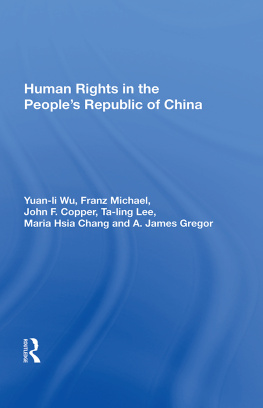
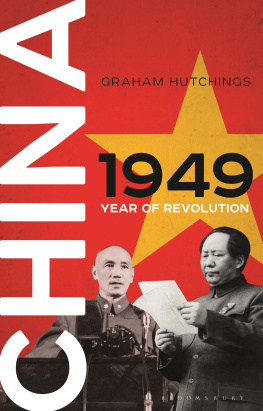

![Flower - China: [the essential guide to customs & culture]](/uploads/posts/book/200771/thumbs/flower-china-the-essential-guide-to-customs.jpg)
